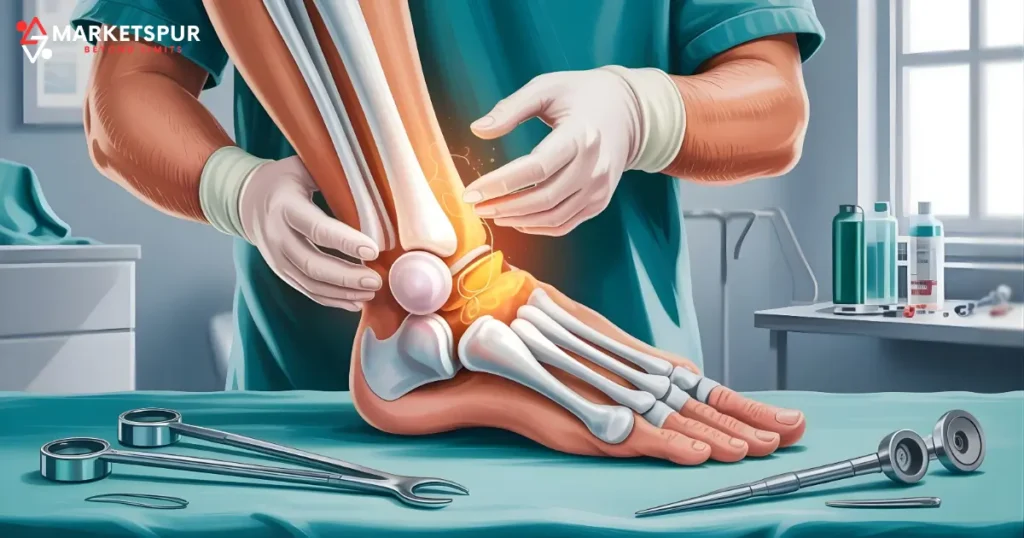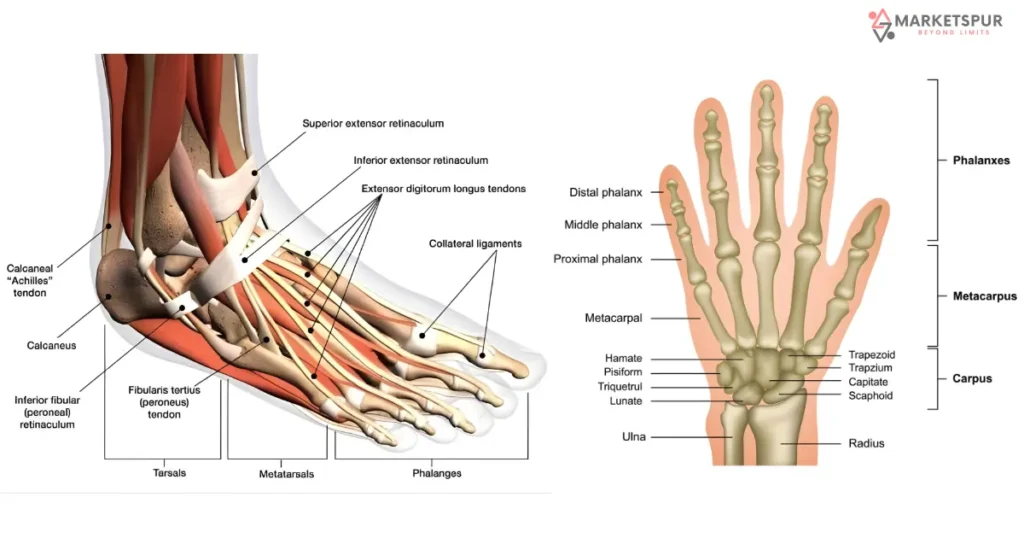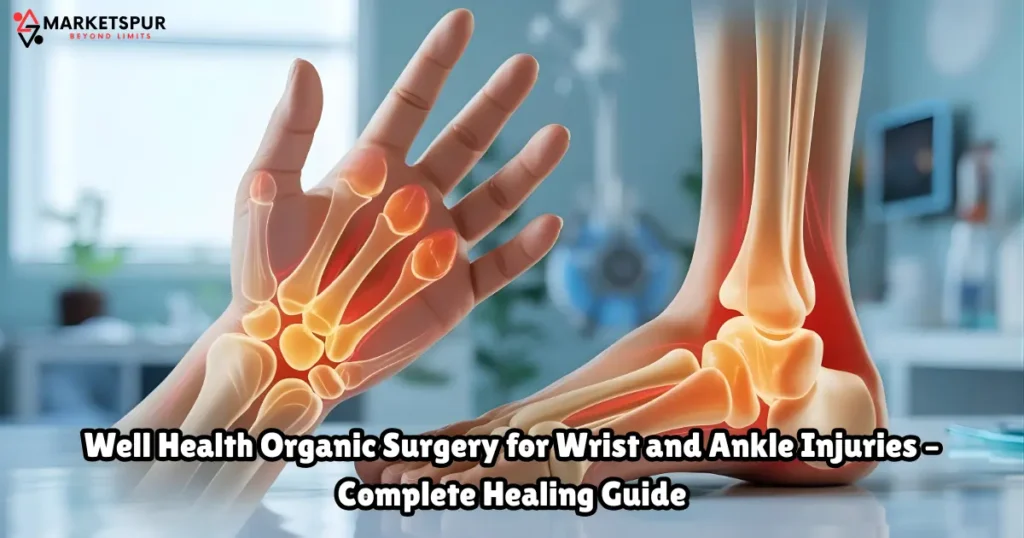WellHealthOrganic Surgery for Wrist and Ankle Injuries offers a new era of healing that blends modern orthopedic surgery with natural healing principles. Whether caused by sprains and strains, ligament tears, or bone fractures, these injuries demand expert care and a precise treatment approach.
The WellHealthOrganic method focuses on both surgical precision and the body’s natural ability to repair itself. By combining minimally invasive surgery with holistic rehabilitation, patients experience faster recovery, reduced pain, and improved joint stability. This innovative balance between technology and organic wellness makes WellHealthOrganic surgery a trusted path toward long-term joint health and complete recovery.
- Introduction – Why Wrist and Ankle Injuries Need Proper Care
- Understanding WellHealthOrganic Surgery Approach
- Common Wrist and Ankle Injuries That May Need Surgery
- When Is Surgery the Best Option for Recovery?
- Types of WellHealthOrganic Surgeries for Wrist and Ankle Injuries
- Benefits of Choosing WellHealthOrganic Surgery
- Possible Risks and Complications to Consider
- Recovery and Rehabilitation After Surgery
- Non-Surgical and Organic Healing Alternatives
- Tips to Prevent Wrist and Ankle Injuries in Future
- Frequently Asked Questions (FAQs)
- Conclusion – Balancing Modern Surgery with Organic Healing
- References
Introduction – Why Wrist and Ankle Injuries Need Proper Care
Every movement you make relies on your wrists and ankles. When wrist and ankle injuries happen — whether from sprains and strains, fractures and dislocations, or sudden ligament tears — even simple tasks feel impossible. Neglecting treatment can lead to chronic pain, joint instability, and limited mobility.
That’s where the WellHealthOrganic approach steps in. By blending advanced surgical techniques with organic wellness, this method ensures your body not only heals but thrives through every phase of recovery.
Understanding WellHealthOrganic Surgery Approach
The WellHealthOrganic surgery for wrist and ankle injuries isn’t just about fixing a broken bone. It’s a wellness-based surgery approach focused on total-body recovery. Using minimally invasive surgery and precision surgery, skilled orthopedic surgeons repair damaged tissues while protecting surrounding structures.
What sets it apart is its holistic rehabilitation plan — a mix of natural healing principles, stress management, and nutritional support that promotes balance between modern medicine and organic care.

Common Wrist and Ankle Injuries That May Need Surgery
Injuries often happen during trauma or accident recovery, sports, or even daily life. The most frequent ones include bone fractures, ligament reconstruction, tendon repair, arthritis pain and stiffness, and joint dislocation.
These problems affect musculoskeletal care and can worsen without medical attention. Early diagnosis by a healthcare provider ensures a faster recovery journey and reduces the risk of long-term complications.
When Is Surgery the Best Option for Recovery?
Not every injury requires an operation. However, surgical treatment options become necessary when non-surgical therapies fail. If pain, weakness, or instability continue after physical therapy, your doctor may recommend orthopedic surgery.
Through advanced imaging, surgeons can pinpoint damage and perform minimally invasive techniques that repair ligaments and tendons with remarkable accuracy — helping restore joint stability and function.
Types of WellHealthOrganic Surgeries for Wrist and Ankle Injuries

The WellHealthOrganic team performs a wide range of orthopedic procedures designed for personalized results. Common examples include tendon and ligament repairs, bone fixation for fractures, and arthroscopic procedures using small incisions to reduce tissue trauma.
Each personalized treatment plan focuses on the patient’s injury type, lifestyle, and health goals. The aim is a faster, cleaner, and more natural bone healing process supported by holistic healthcare.
Benefits of Choosing WellHealthOrganic Surgery
Patients who undergo WellHealthOrganic surgery for wrist and ankle injuries often notice faster recovery times, less pain, and better long-term function. With minimally invasive techniques, the body heals quicker and scars are smaller.
Paired with personalized care plans, this method ensures minimal discomfort, excellent outcomes, and lasting long-term joint health. The combination of modern medical techniques and natural recovery process creates harmony between science and nature.
Possible Risks and Complications to Consider
Even with the safest procedure, surgery carries some risks. Common post-operative complications may include risk of infection, blood clot risk, nerve damage prevention issues, or delayed healing if recovery instructions aren’t followed.
Following post-surgery guidelines and attending every check-up is vital. Your healthcare provider monitors progress closely, reducing risks and improving your long-term outcomes.
Recovery and Rehabilitation After Surgery
Healing begins immediately after your operation. The post-surgery care plan usually involves rest, ice, and elevation. Once cleared, patients begin gentle physical therapy exercises guided by a physical therapy specialist.
The rehabilitation process often includes a combination of pain management strategies, nutritional support, and stress management. This structured rehabilitation protocol helps restore strength, flexibility, and confidence throughout the recovery journey.
Non-Surgical and Organic Healing Alternatives
For minor cases, non-surgical treatment options can work wonders. Techniques like holistic rehabilitation, massage therapy, and acupuncture support the natural healing principles of the body.
A balanced diet rich in vitamin and mineral intake, especially calcium and vitamin D for bone health, accelerates the natural recovery process. Gentle injury prevention exercises and safe physical activity also help maintain overall well-being and mobility.
Tips to Prevent Wrist and Ankle Injuries in Future
Simple lifestyle choices can dramatically reduce the risk of future injuries. Strengthen muscles around your joints through physical therapy exercises and stay consistent with lifestyle adjustments.
Wear proper shoes, stretch before activity, and never ignore early signs of strain. A medical consultation with your healthcare provider ensures your body remains prepared for movement and long-term wellness.
Frequently Asked Questions (FAQs)
Q1: What is the success rate of wrist ligament surgery?
Most orthopedic surgeons report an 85–95% success rate, especially with ligament reconstruction and tendon repair done using precision surgery.
Q2: What I wish I knew before ankle surgery?
Patients often wish they had understood the importance of strict rehabilitation protocols and patience during their recovery journey. Healing takes time.
Q3: How long after ankle tendon surgery can I walk?
Typically, patients begin limited walking after 6–8 weeks, depending on the personalized treatment plan and post-surgery care.
Q4: What is the success rate of ankle stabilization surgery?
Modern orthopedic procedures offer an 85–95% success rate with excellent joint stability when performed using advanced surgical techniques.
Q5: What does the 85–95% success rate mean for patients?
It means that the anatomic repair of the lateral-ligament complex with the Gould modification offers a high likelihood of full function recovery.
Q6: What is the recovery time for ankle stabilization surgery?
Most recover fully within 3–6 months, depending on rehabilitation protocols and personalized care plans.
Q7: Is ligament surgery a major surgery?
Yes, it’s considered a major surgery, but thanks to minimally invasive techniques and improved post-surgery care, recovery is smoother than before.
Conclusion – Balancing Modern Surgery with Organic Healing
The WellHealthOrganic surgery for wrist and ankle injuries represents the perfect balance of science and nature. By blending modern medical techniques with organic wellness, it ensures the body heals from the inside out.
Choosing this wellness-based surgery approach not only restores mobility but also strengthens your connection to long-term health. Healing isn’t just about recovery — it’s about rediscovering the strength to move freely again.
References
American Academy of Orthopaedic Surgeons. Ankle Fractures (Broken Ankle) (https://orthoinfo.aaos.org/en/diseases–conditions/ankle-fractures-broken-ankle/). Last reviewed 9/2022. Accessed 6/24/2024.
American Orthopaedic Foot & Ankle Society. Ankle Conditions (https://www.footcaremd.org/conditions-treatments/ankle). Accessed 6/24/2024.
Arthritis Foundation. Surgery Options for Ankle Arthritis (https://www.arthritis.org/health-wellness/treatment/joint-surgery/preplanning/surgery-options-for-ankle-arthritis). Accessed 6/24/2024.
HealthDirect (AU). Ankle Fracture Surgery (https://www.healthdirect.gov.au/surgery/ankle-fracture-surgery). Updated 9/2023. Accessed 6/24/2024.
VersusArthritis. Foot and Ankle Surgery (https://versusarthritis.org/about-arthritis/treatments/surgery/foot-and-ankle-surgery/). Accessed 6/24/2024.
Mayo Clinic. Wrist Pain and Treatments (https://www.mayoclinic.org/symptoms/wrist-pain/basics/causes/sym-20050950). Accessed 6/24/2024.

